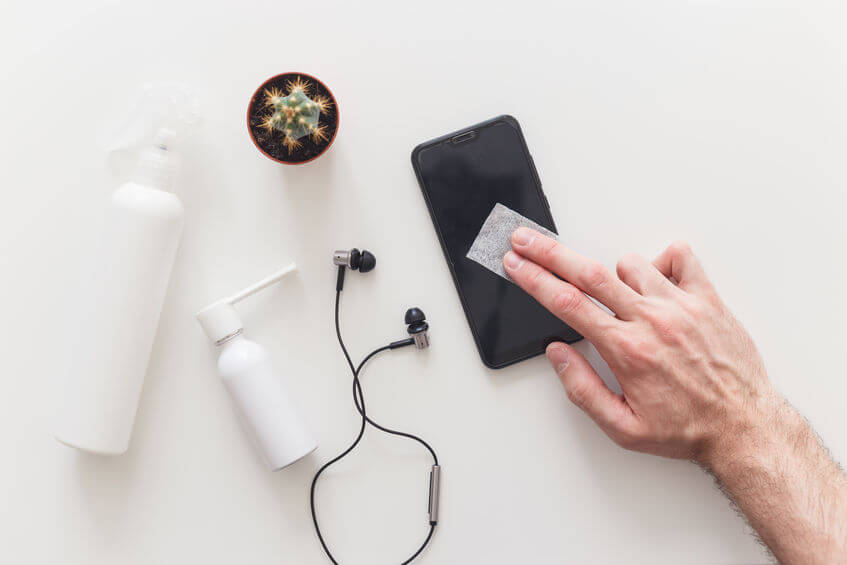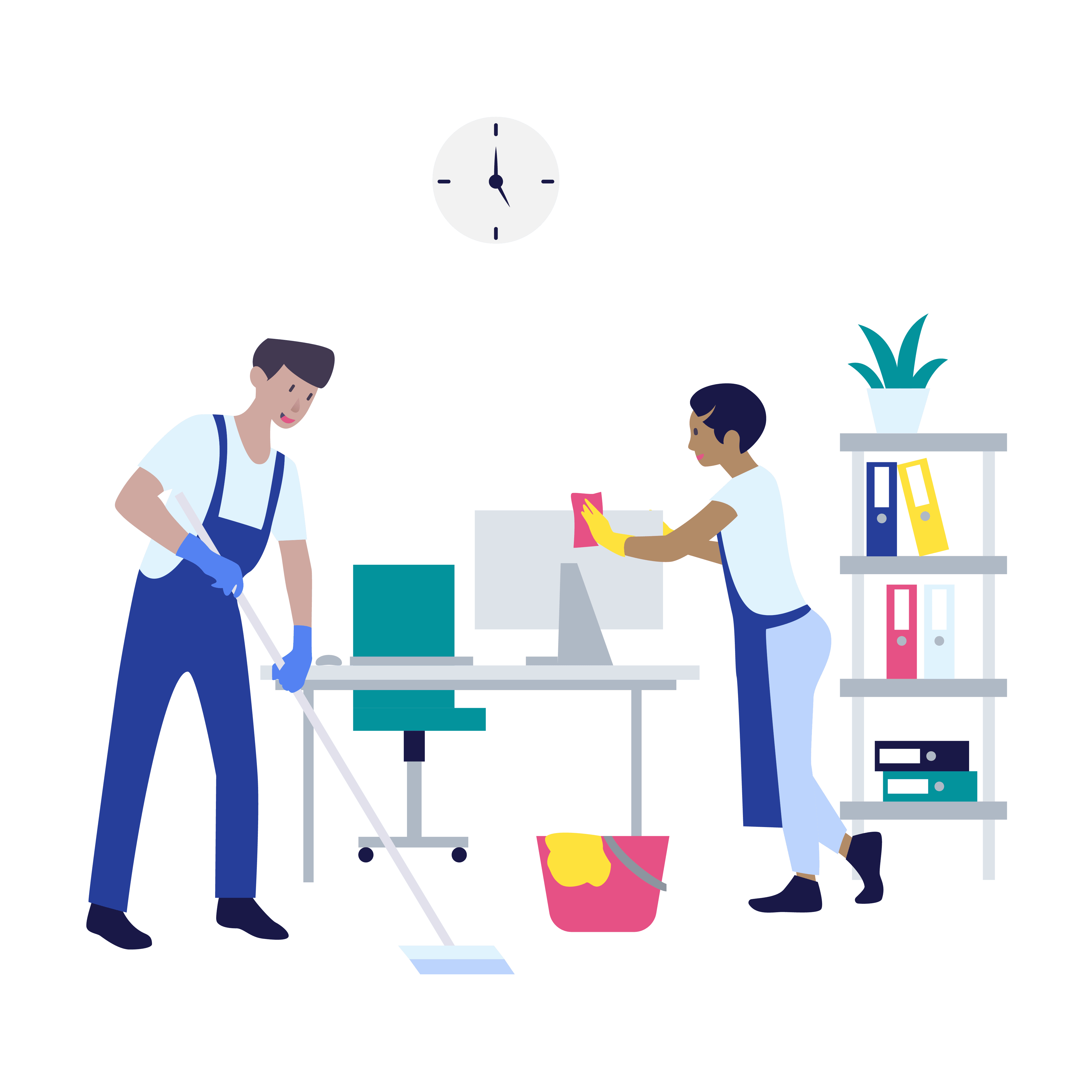Homes and offices are all full of different surfaces, touch points, materials, and so on. It’s quite difficult to say how long viruses, such as COVID-19 and other coronaviruses may be thriving in your space. We have compiled a list of the different materials and how long COVID-19 lasts for on them. Read ahead for more information. Please note: the following should only be referred to as a guideline as current research and new evidence comes into light every day where COVID-19 is concerned. When in doubt, thoroughly clean and disinfect the area.
You can also find our guide on which disinfectants to use to combat COVID-19 here. (insert link)
How long can COVID-19 live on skin?
Researchers in Japan have proven that COVID-19 can live for up to 9 hours on the body. This research has highlighted that hand-washing and sanitising are extremely important in reducing coronaviruses and their spread.
Which hand cleanser should I be using?
Since most people come into contact with various touch points throughout a day, hand washing is extremely important. The CDC has recommended that we clean our hands with soap and water wherever possible. Hands must be scrubbed for a minimum of twenty seconds before rinsing it off. Be sure to clean the entire hand and don’t forget under the nails. If you are in a situation where you cannot access a basin to wash with soap and water, use a hand sanitiser until you can wash with soap. Hand sanitisers must contain at least 60% alcohol to be effective against COVID-19.
Porous vs non-porous surfaces
Although the conditions in which COVID-19 are present impact how long the virus can live, it has been widely proven that COVID-19 can live much longer (up to three days) on plastics and even up to five days on metals. Since many of the common touch-points in our daily lives are non-porous, it’s good to be aware of your surroundings and it is worth considering which areas a lot of people come into contact with and where you should clean and disinfect more frequently.
Some examples of non-porous surfaces include:
- Metal
- Plastic
- Varnished wood
- Glass
Clean touch points frequently
Common touch points include, but are not limited to the following:
- Toilet handles and flush buttons
- Handrails
- Door handles
- Phones
- Elevator buttons
- Light switches
As most of these points are non-porous surfaces, it is a good idea to ensure frequent thorough cleaning and disinfecting of them. Depending on their material and various other factors, COVID-19 can live on these surfaces from anything between a few hours and a few days! For this reason, if you have an area with heavy traffic, it is recommended to provide hand sanitisers for public use in these areas. If people moving throughout the space use hand sanitisers, the risk of spreading viruses is lessened.
We’ve covered non-porous surfaces, so how about porous surfaces? Porous materials include:
- Cork
- Cardboard
- Sponges
- Untreated wood
- Some clothing (for example: cotton) *please note: some clothing may contain non-porous materials – for example: metal clips and buttons, plastic pieces, etc. Keep this in mind when cleaning, washing, and disinfecting.
For porous materials and items in your home and office, it may be more difficult to clean. However, since porous materials do not transfer germs and viruses as easily as non-porous ones, you can put your mind at ease a little. Plus, COVID-19 has less chance of survival for a long time on porous materials. With that being said, not as much research has been done on these surfaces.
How to wash clothes
If you’re worrying about the lack of research done on porous materials and surfaces. Try to not worry. The Center for Disease Control and Prevention has stated that washing clothes as normal is sufficient in day-to-day cleaning. Wash your clothes (and reusable face masks) on the warmest setting and with fabric detergent. Thoroughly dry your clothing before wearing, too.
How about other porous surfaces?
If your home or workspace is carpeted, you may be worrying about how to keep it clean and germ and virus-free. Immediately taking your shoes off upon entering your household or working area will help to avoid treading COVID-19 throughout the space. However, if you choose to do this, remember to wash your hands immediately after touching your shoes. If you do not, any germs or viruses you touch on your shoes will be spread easily. If you are still worried about the cleanliness of your carpets, professional carpet cleaning may help take the weight off your mind a little. Not to mention, carpet cleaning can also help reduce dust, other germs, and dust mites.
How long does COVID-19 live on food?
The CDC stated that there is no evidence to suggest that COVID-19 can be passed through food and/or food packaging. However, if you wish you err on the side of caution, rinse fruits and vegetables before cooking, and wipe down food packaging after purchasing. As always, ensure that food is thoroughly cooked before consuming. Although there is no evidence to suggest that COVID-19 is passed through food, by doing the above, you’re leading a healthier lifestyle and reducing the risk of becoming ill.
Don’t forget worktops!
Most countertops in kitchens are non-porous surfaces. Most of us are guilty of popping shopping bags that may have touched the ground, handbags, keys, different food items, and so forth on the countertop. If you have pets, they’ll probably be used to walking all over them, too. Remember to frequently clean and disinfect worktops.
Frequent hand washing
Since COVID-19 is such a new virus to us all, there is no definite answer on how long the virus can live. For this reason, frequent hand washing, along with frequent touch point cleaning and disinfecting is the best way to ensure that the virus is destroyed and the chance of it spreading elsewhere is decreased.
To sum up, this virus can thrive in some situations and die after a few seconds in others. Be vigilant and try to clean as best you can.
We hope that our blog has been useful to you and we hope that you, your family, friends, coworkers, and workers remain safe throughout this pandemic. Take care!






